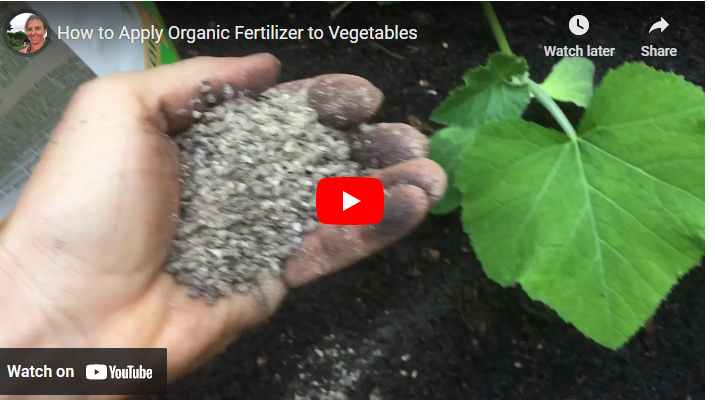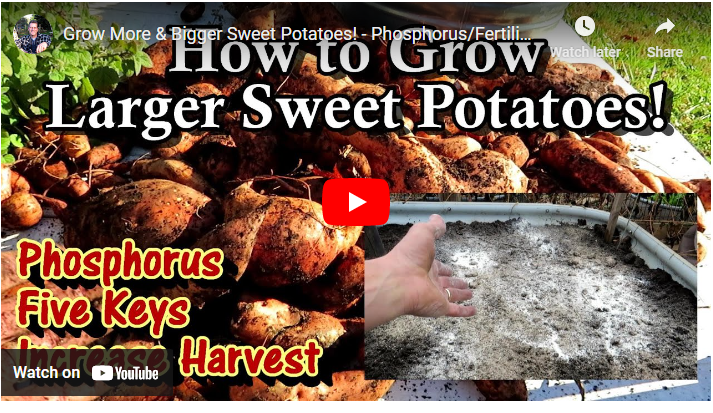Applying fertilizer at the right time is crucial for the successful growth and development of vegetables. Knowing when to apply fertilizer can significantly impact their nutrient uptake, yield, and overall health. This guide explores the importance of timing in fertilizer application for vegetables.
When it comes to fertilizing vegetables, it is generally recommended to apply fertilizer before planting or sowing the seeds to provide the nutrients necessary for healthy growth. Additionally, periodic side-dressing or foliar feeding during the growing season can help replenish nutrients and support continuous plant development.
From understanding the growth stages and nutrient requirements of different vegetables to considering soil conditions and environmental factors, proper timing ensures optimal nutrient availability and utilization.
Whether you are a beginner or experienced gardener, this resource will provide valuable insights on when and how to apply fertilizer effectively, maximizing the productivity and nutritional value of your vegetable garden.
When to Apply Fertilizer to Vegetable
Applying fertilizer to vegetables plays a vital role in providing the necessary nutrients for healthy plant growth and high yields.
However, knowing when to apply fertilizer is just as important as choosing the right type and quantity.
By understanding the growth stages of vegetables, their nutrient requirements, and the influence of soil conditions and environmental factors, gardeners can optimize fertilizer application for maximum effectiveness.
There are different stages when you can apply fertilizer to vegetables. They include:
#1. Early Stage – Pre-Planting Preparation
Before planting vegetables, it’s beneficial to prepare the soil by incorporating organic matter, such as compost or well-rotted manure.
These amendments help improve soil structure, fertility, and nutrient availability.
This pre-planting stage sets the foundation for healthy plant growth and reduces the need for excessive fertilization later on.
#2. Seedling Stage
Once the seeds have germinated and seedlings have emerged, it’s essential to provide them with a gentle start.
Avoid applying fertilizer directly to young seedlings, as it can cause root burn or damage.
Instead, focus on providing adequate water and ensuring the seedlings have established themselves in the soil before applying fertilizer.
#3. Vegetative Growth Stage
During the vegetative growth stage, which includes leaf development and plant expansion, vegetables have a higher demand for nitrogen (N) to support lush foliage growth.
Applying a balanced fertilizer, such as one with an N-P-K ratio of 10-10-10 or 14-14-14, can provide the necessary nutrients for healthy leaf development.
Distribute the fertilizer evenly around the base of the plants, keeping it a few inches away from the stem to avoid direct contact.
#4. Flowering and Fruit Production Stage
As vegetables transition from the vegetative stage to flowering and fruiting, their nutrient requirements change.
At this stage, it’s crucial to provide adequate phosphorus (P) and potassium (K), which promote flower formation, pollination, and fruit development.
Use a fertilizer with a higher P and K content, such as one with an N-P-K ratio of 5-10-10 or 10-20-20.
Apply the fertilizer around the plants, avoiding contact with leaves or fruits.
#5. Mid-Season Boost
During the middle of the growing season, when vegetables are actively producing, a supplemental fertilizer application can provide a nutrient boost.
This helps replenish nutrients that may have been depleted from the soil.
Applying a slow-release or organic fertilizer can provide a steady supply of nutrients over an extended period, ensuring continuous plant growth and productivity.
#6. Avoiding Late Season Fertilization
Towards the end of the growing season, it’s generally recommended to avoid applying fertilizers to vegetables.
This allows the plants to naturally slow down and prepare for the transition into dormancy.
Late-season fertilization can stimulate excessive foliage growth, making the plants more susceptible to frost damage and reducing their ability to store energy for the next season.
Type of Fertilizer to Apply to Vegetable
When it comes to fertilizing vegetables, choosing the right type of fertilizer is crucial for providing the necessary nutrients.
When selecting a fertilizer for your vegetables, consider factors such as nutrient requirements, soil conditions, and environmental considerations.
Here are five common types of fertilizers and examples of each:
#1. Chemical Fertilizer
Chemical fertilizers are synthetic fertilizers that are manufactured and formulated to provide specific nutrient ratios.
They are often highly concentrated and provide a quick release of nutrients to the plants.
Examples of chemical fertilizers include ammonium nitrate, potassium sulfate, and superphosphate.
It’s important to follow the instructions carefully when using chemical fertilizers to avoid over-application and potential damage to the plants.
#2. Organic Fertilizer
Organic fertilizers are obtained from natural sources, including plant and animal materials.
They contain organic matter that slowly releases nutrients into the soil, promoting long-term soil health and fertility. Some examples of organic fertilizers encompass compost, manure, bone meal, and fish emulsion.
Organic fertilizers improve soil structure, enhance nutrient availability, and contribute to the overall sustainability of the garden.
#3. Liquid Fertilizer
Liquid fertilizers come in liquid form and are diluted with water before application.
They are quickly absorbed by the plants’ roots and provide immediate nutrient uptake. Liquid fertilizers can be either chemical or organic-based, offering a wide range of nutrient compositions.
Examples of liquid fertilizers include fish emulsion, seaweed extract, and liquid compost tea. They are ideal for foliar feeding or for providing a quick nutrient boost to plants.
#4. Granular Fertilizer
Granular fertilizers consist of small pellets or granules that are spread on the soil surface or incorporated into the soil.
As they decompose, they gradually release nutrients over an extended period. Granular fertilizers are available in various formulations, including chemical and organic options.
Examples of granular fertilizers include 10-10-10, bone meal, and blood meal. They are convenient to use and provide a steady supply of nutrients to the plants.
#5. Slow Release Fertilizer
Slow-release fertilizers are formulated to release nutrients gradually over an extended period, providing a sustained source of nutrition for the plants.
They are available in different forms, such as coated pellets or organic materials.
Examples of slow-release fertilizers include osmocote, polymer-coated urea, and composted chicken manure.
Slow-release fertilizers are convenient for reducing the frequency of fertilizer applications and ensuring a consistent nutrient supply to the plants.
It’s recommended to conduct a soil test to determine the nutrient needs of your garden and choose a fertilizer that addresses any deficiencies.
Follow the instructions provided with the fertilizer and adhere to proper application rates to avoid over-fertilization and potential harm to the plants.
How to Apply Fertilizer to Vegetable Plant
Here are step-by-step instructions on how to apply fertilizer to vegetable plants:
#1. Chemical Fertilizer:
- Read the instructions on the fertilizer packaging to determine the appropriate application rate for your vegetable plants.
- Wear gloves and protective clothing when handling chemical fertilizers.
- Calculate the amount of fertilizer needed based on your garden size and the recommended application rate.
- Sprinkle the fertilizer evenly around the base of the vegetable plants, keeping it a few inches away from the stem.
- Gently work the fertilizer into the top layer of soil using a rake or garden fork.
- Water the area thoroughly after applying the fertilizer to help nutrients penetrate into the root zone.
- Avoid over-application of chemical fertilizers, as it can lead to nutrient imbalances and potential plant damage.
#2. Organic Fertilizer
- Determine the appropriate amount of organic fertilizer to apply based on the recommended application rate for your vegetable plants.
- Apply the organic fertilizer evenly around the base of the plants, keeping it a few inches away from the stem.
- Gently work the fertilizer into the top layer of soil using a rake or garden fork.
- Water the area well after applying the organic fertilizer to aid in nutrient release and distribution.
- Alternatively, you can incorporate organic fertilizers into the soil during pre-planting preparation or as a side-dressing along the rows of growing plants.
- Organic fertilizers typically break down slowly, so additional applications may be required throughout the growing season.
#3. Liquid Fertilizer
- Dilute the liquid fertilizer according to the instructions provided on the packaging.
- Fill a watering can or sprayer with the diluted liquid fertilizer.
- Apply the liquid fertilizer directly to the soil around the base of the vegetable plants, avoiding contact with the leaves or stems.
- Ensure even coverage by moving the watering can or sprayer in a circular motion around each plant.
- After applying the liquid fertilizer, water the plants lightly to help nutrients seep into the root zone.
- For foliar feeding, spray the diluted liquid fertilizer directly onto the leaves, ensuring complete coverage.
- Apply liquid fertilizer during the recommended frequency and avoid over-application to prevent nutrient burn.
#4. Granular Fertilizer
- Determine the appropriate amount of granular fertilizer to apply based on the recommended application rate for your vegetable plants.
- Sprinkle the granular fertilizer evenly on the soil surface around the plants, keeping it a few inches away from the stem.
- Use a rake or garden fork to lightly work the granular fertilizer into the top layer of soil.
- Water the area thoroughly after applying the granular fertilizer to initiate nutrient release and facilitate absorption.
- Granular fertilizers typically release nutrients slowly, so additional applications may be necessary throughout the growing season.
- Take care not to over-apply granular fertilizers, as excessive amounts can lead to nutrient imbalances or leaching.
#5. Slow-Release Fertilizer
- Read the instructions on the slow-release fertilizer packaging to determine the appropriate application rate and frequency.
- Sprinkle the slow-release fertilizer evenly around the base of the vegetable plants, ensuring it is a few inches away from the stem.
- Lightly incorporate the slow-release fertilizer into the top layer of soil using a rake or garden fork.
- Water the area well after applying the slow-release fertilizer to activate the nutrient release process.
- Slow-release fertilizers provide nutrients gradually over time, reducing the need for frequent applications.
- Follow the recommended frequency of application for slow-release fertilizers, typically once every few months or as specified on the packaging.
How often should Vegetable Plants Be Fertilized?
The frequency of fertilizing vegetable plants depends on several factors such as the specific crop, soil fertility, and the type of fertilizer used.
As a general guideline, most vegetable plants benefit from regular fertilization throughout the growing season.
It is commonly recommended to apply fertilizer every 4-6 weeks or as indicated on the fertilizer packaging.
However, it’s essential to consider the specific nutrient requirements of the vegetable plants and adjust the fertilization schedule accordingly.
How Much Fertilizer Does Vegetable Plants Need?
The amount of fertilizer required by vegetable plants varies depending on factors such as plant type, soil conditions, and nutrient deficiencies.
It’s important to conduct a soil test to determine the nutrient content and pH level of the soil. Soil test results will provide recommendations on the appropriate fertilizer application rate based on the specific needs of the vegetable plants.
Following these recommendations will ensure that the plants receive the right amount of nutrients without over- or under-fertilizing.
Best Fertilizer for Vegetable Plants
The best fertilizer for vegetable plants depends on various factors, including the specific nutrient requirements of the plants, soil conditions, and gardening practices.
Here are three common types of fertilizers often recommended for vegetable plants:
- Balanced NPK Fertilizer: A balanced fertilizer with equal or close to equal proportions of nitrogen (N), phosphorus (P), and potassium (K) is suitable for most vegetable plants. For example, a fertilizer with an NPK ratio of 10-10-10 or 14-14-14 provides a good all-around nutrient supply for vegetables.
- Organic Fertilizer: Organic fertilizers derived from natural sources such as compost, manure, and plant-based materials are beneficial for vegetable plants. They improve soil health, provide a slow-release of nutrients, and enhance microbial activity. Examples include well-rotted compost, aged manure, and organic-based fertilizer blends.
- Slow-Release Fertilizer: Slow-release fertilizers provide a gradual and consistent release of nutrients over an extended period. They are convenient for reducing the frequency of fertilizer applications. Slow-release fertilizers are available in various formulations, including organic and synthetic options. Examples include coated granules or pellets that release nutrients slowly as they break down.
Factors to Consider before Applying Fertilizer to Vegetable Plants
Before applying fertilizer to vegetable plants, consider the following factors:
- Soil Test: Conduct a soil test to determine the nutrient content, pH level, and any nutrient deficiencies or imbalances in the soil. Soil test results will guide you in selecting the appropriate fertilizer and application rate.
- Nutrient Requirements: Different vegetables have specific nutrient requirements. Consider the specific needs of the vegetable plants and select a fertilizer that provides the necessary nutrients in the right proportions.
- Growth Stage: Vegetable plants have varying nutrient requirements during different growth stages. Adjust the fertilizer application rates and timing based on the plant’s growth stage, such as early growth, flowering, and fruiting.
- Environmental Conditions: Environmental factors like temperature, rainfall, and soil moisture influence nutrient availability and plant nutrient uptake. Adjust fertilizer application rates based on these conditions to avoid nutrient leaching or runoff.
- Fertilizer Formulation: Consider the type of fertilizer best suited for your vegetable plants, such as granular, liquid, organic, or slow-release fertilizers. Select a formulation that aligns with your gardening practices and preferences.
Importance of Fertilizing Vegetable Plants
Fertilizing vegetable plants is essential for several reasons:
- Nutrient Supply: Fertilizers provide essential nutrients that may be deficient in the soil, ensuring optimal plant growth, development, and productivity.
- Enhanced Yield: Properly fertilized vegetable plants tend to produce higher yields of quality crops, providing an abundant harvest for personal consumption or sale.
- Plant Health: Adequate nutrients promote healthy plant growth, strengthen resistance to pests and diseases, and improve overall plant vigor.
- Balanced Nutrition: Fertilizers allow for the adjustment of nutrient ratios in the soil to meet the specific needs of different vegetable crops.
- Sustainable Gardening: Fertilizing vegetable plants optimizes nutrient use efficiency, reducing waste and minimizing the environmental impact of farming practices.
How to Add Fertilizer to Soil After Planting
- Select the Right Fertilizer: Choose a fertilizer that is suitable for the specific needs of your plants. Consider factors such as the nutrient requirements of the plants and the soil conditions.
- Read the Instructions: Carefully read and follow the instructions provided on the fertilizer packaging regarding the application rate and method.
- Apply Near the Plant Base: Sprinkle or broadcast the fertilizer evenly around the base of the plants. Avoid direct contact with the plant’s leaves or stems, as this can cause burning or damage.
- Incorporate into the Soil: Gently work the fertilizer into the top layer of soil using a rake or garden fork. Be careful not to disturb the plant roots.
- Water Thoroughly: After applying the fertilizer, water the soil thoroughly to help dissolve the nutrients and carry them down to the plant roots.
- Monitor Plant Response: Keep an eye on the plants’ growth and health after fertilizing. If any adverse effects are observed, such as wilting or leaf discoloration, adjust the fertilizer application or consult a gardening expert for guidance.
Best Time to Fertilize Plants: Morning or Evening?
The best time to fertilize plants is generally in the morning or early afternoon. This allows the plants to utilize the nutrients during the day when photosynthesis is most active.
Avoid fertilizing in the evening or at night, as the plants may not absorb the nutrients effectively, and excess moisture can increase the risk of fungal diseases.
Best Fertilizer for Vegetable Garden Before Planting:
Before planting a vegetable garden, it’s beneficial to prepare the soil by adding organic matter and nutrients.
Here are a few types of fertilizers commonly used for pre-planting:
- Compost: Incorporating well-rotted compost into the soil before planting enriches it with organic matter and essential nutrients. Compost improves soil structure, enhances moisture retention, and promotes beneficial microbial activity.
- Organic-Based Fertilizer: Organic-based fertilizers, such as those derived from natural sources like bone meal, blood meal, or fish emulsion, provide slow-release nutrients that benefit vegetable plants during their early growth stages.
- Balanced NPK Fertilizer: A balanced fertilizer with equal or close to equal proportions of nitrogen (N), phosphorus (P), and potassium (K) can be applied before planting to ensure a well-rounded nutrient supply for the vegetable garden.
Conclusion
Understanding the timing of fertilizer application is essential for maximizing the potential of vegetable crops. By considering the specific nutrient needs of different vegetables, along with soil conditions and environmental factors, gardeners can ensure proper nourishment and promote healthy, bountiful harvests. Applying fertilizer at the right time is a key component of successful vegetable gardening.



